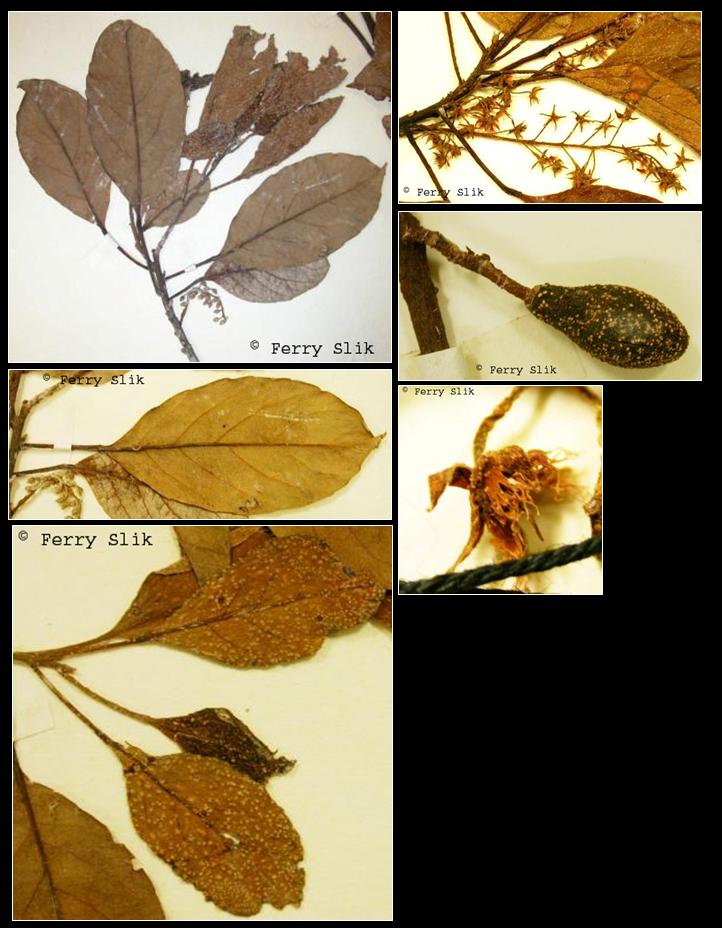Elaeocarpus floribundus Bl., Bijdr. (1825)
Latin for 'with many flowers'.Synonyms
Elaeocarpus floribundus var. tahanensis (Hend.) Ng
Elaeocarpus grossus Wall. [Invalid]
Elaeocarpus lobbianus Turcz.
Elaeocarpus pseudosepicanus O.C.Schmidt
Elaeocarpus tahanensis M.R.Hend.
Diagnostics
Upper canopy tree up to 49 m tall and 84 cm dbh. Stipules dropped early.
Leaves alternate, simple, penni-veined, glabrous or with scales (scurvy like),
petioles long, leaf margin usually toothed. Flowers ca. 8 mm in diameter,
white-yellow, petal margins fimbriate, placed in racemes. Fruits ca. 22 mm long,
green, fleshy drupes.
Description
An evergreen tree up to 50 m tall; leaves often crowded at apices of pubescent, glabrescent twigs,
oblong, elliptical to obovate, (3-)8-17(-22) cm x (2-)3-7(-9) cm, base cuneate, apex acuminate,
margin serrate, petiole 2-4 cm long, stipules early caducous; raceme below the leaves, 7-14(-20) cm
long, many-flowered, pedicel 4-8 mm long; sepals lanceolate or narrowly triangular, 4 mm x 2 mm,
petals obovate-oblong, 5 mm x 2 mm, gradually dilated from a broad base, with a more or less
abruptly widened apical portion, white, stamens 30-40, filaments about 0.5 mm long, anthers 1-2 mm
long, ovary shortly hairy, 3-celled, usually 2 ovules per cell; drupe ellipsoid, 3-3.5 cm x 1.5-2 cm,
often with yellow dots, stone almost smooth, slightly grooved. [from PROSEA]
Ecology
In undisturbed mixed dipterocarp, sub-montane and keranga forests up to 1500
m altitude. Usually on hillsides and ridges with sandy to clay soils.
Uses
An infusion of the bark and leaves is used in Sumatra as a mouthwash for inflamed gums. In
Malaysia, the bark and leaves are used in a poultice for ulcers and an extract is drunk as a tonic.
Fruits are edible.
Distribution
India, Anadaman Islands, Indo-China, Thailand, Peninsular Malaysia, Sumatra,
Java, Lesser Sunda Islands, Borneo, Philippines, Celebes.
Local names
Borneo: Empedu, Empeduk, Emperdok, Irat, Kungkurad, Perdu.
English: Rugged oil-fruit.
Indonesia: hahauwan (Sundanese), kemesu (Javanese).
Laos: ma moun, moun.
Malaysia: medang biawak, medang teja, medang telur (Peninsular).
Philippines: malangau (Manobo).
Thailand: muat doi (northern), man som (north-eastern), kalon (central).
Vietnam: c[oo]m tr[aa]u.
